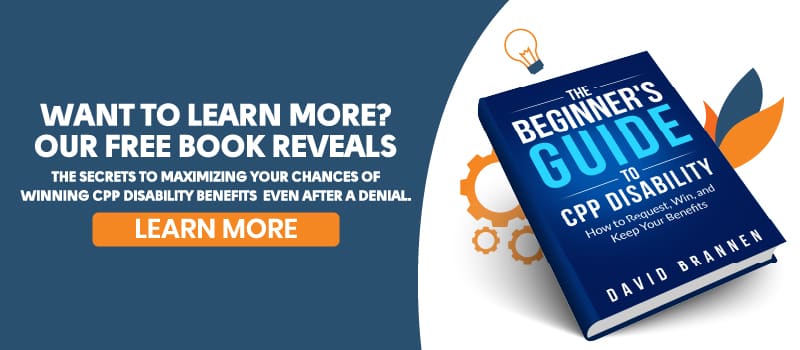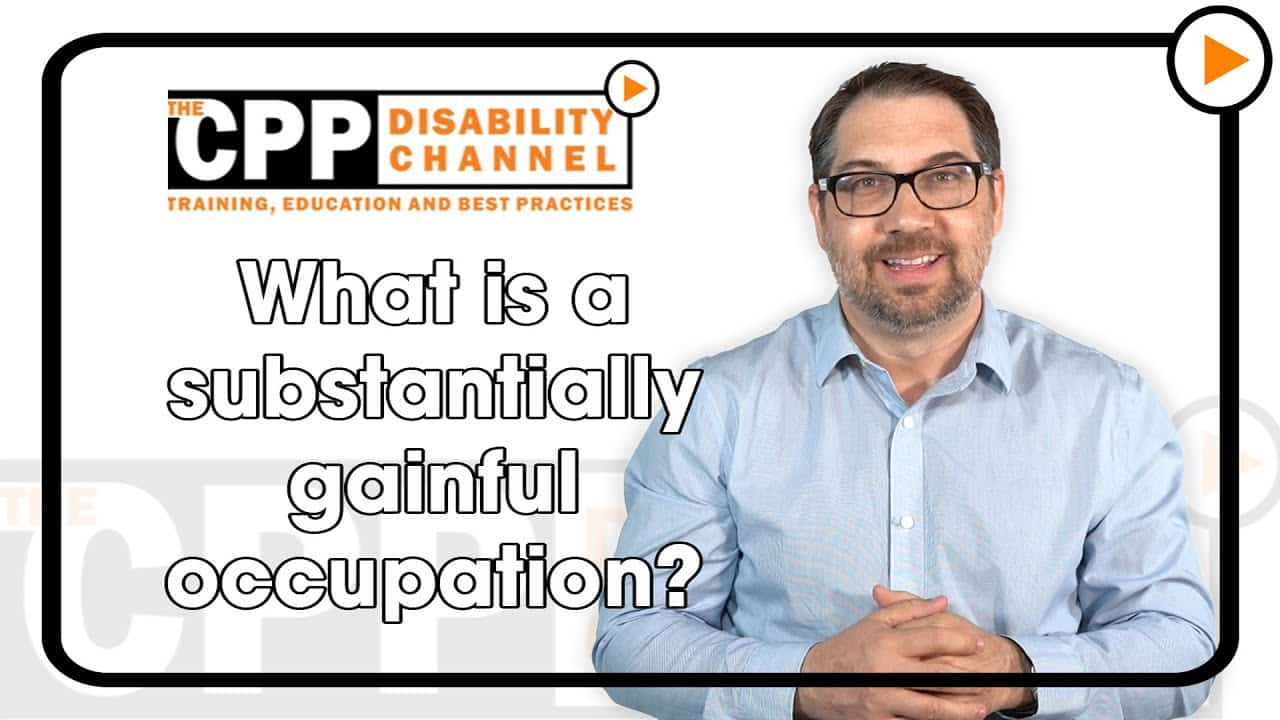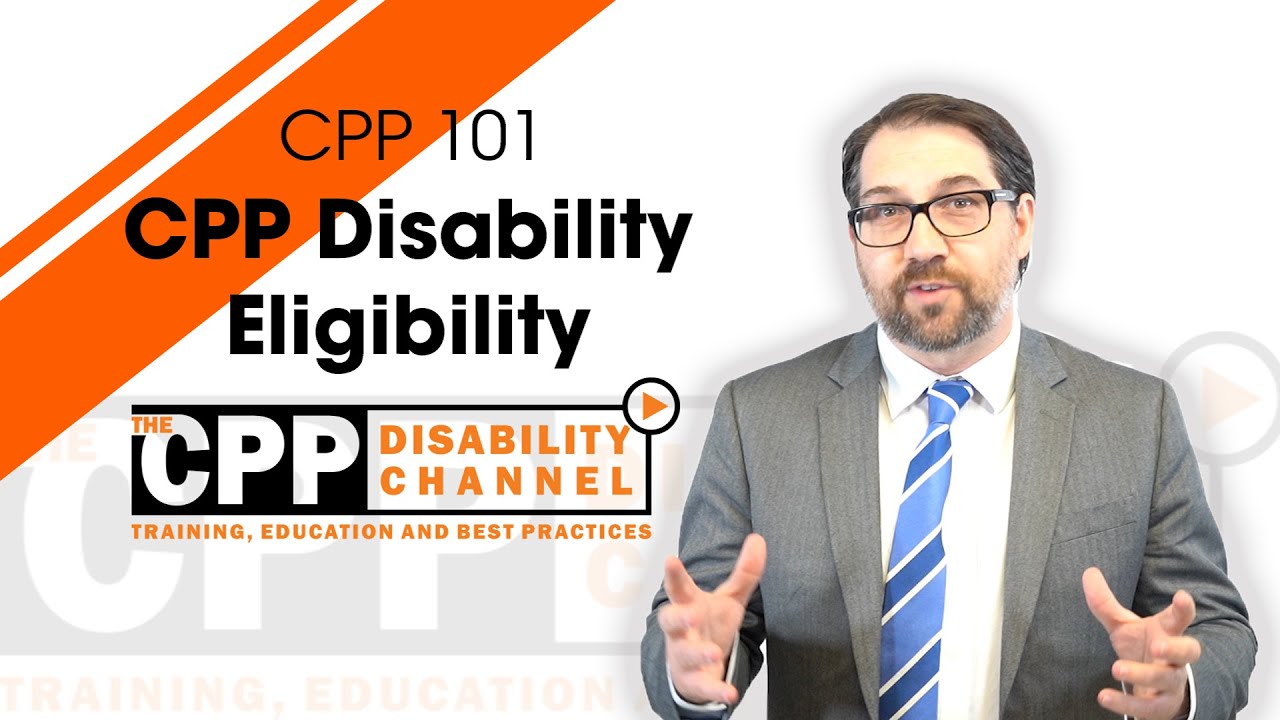If you are in the application process or have been on CPP disability for some time now, you probably already know that there are several eligibility requirements for this benefit. For instance, you need to have contributed enough to CPP, be under the age of 65 and have a disability that is severe and prolonged. Another qualifier — the one we will be discussing in this article — is your disability must regularly prevent you from doing any type of substantially gainful work.
This article is part of our Online Guide to CPP Disability.
So, What is Substantially Gainful Work?
There was a time when there were some debates over what would be considered substantially gainful work. People argued about what substantially gainful employment really meant. And whether certain factors such as prior income, the amount you earned, and the type of employment would be considered when determining whether a position is substantially gainful.
However, these debates subsided in 2014, when the government brought in regulations that created and dictated an income threshold for substantially gainful employment.
Today, the CPP administration defines substantially gainful work as “a job that pays wages equal to or greater than the maximum annual amount a person could receive as a disability pension.”
The maximum annual amount or income threshold is based on the annual CPP benefit itself. So, how it works is every year, Service Canada will look at the maximum monthly payment amount. And then the substantially gainful income threshold is simply any work that is more than 12 times the maximum CPP disability benefit amount.
Let’s test it out.
So, in January 2023, the maximum monthly amount is $1,538.67. And $1,538.67 x 12 is $18,464.04.
Keep in mind, however, this is quite right. The actual maximum annual amount for 2023 is $18,508.36. The reason these numbers differ is because the maximum CPP benefit amounts increase every month as a result of the 2019 CPP enhancement. At the time this article was written, CPP only published the maximum monthly amount for January 2023.
But if we divide $18,508.36 by 12, we can see that the actual maximum monthly amount for 2023 is $1,542.3633.
While these numbers are very close, it is still vital to know the exact amounts. This could be the difference between keeping or losing your CPP disability benefits. So, make sure you check the government of Canada’s CPP disability page to see what the substantially gainful employment threshold is for that year. You don’t have to worry about doing the math — they will always have the amount posted on their website.
Now that you understand how the threshold is calculated let’s move on to what will actually happen if you earn more than the maximum annual amount and are considered to be gainfully employed.
What If I Earn More Than the CPP Disability Substantially Gainful Work Threshold?
If you earn more or equal to the maximum annual amount ( $18,508.36 before tax in 2023), then you will likely no longer qualify for disability benefits.
This is because CPP’s definition of a disability is very linked to your capacity to work and ability to earn income. So, another way of looking at is: if you can earn that amount of money, you are demonstrating that you are regularly capable of working, which would make you ineligible for benefits.
With that said, you may still be able to claim benefits if you make equal or over the maximum annual amount. The CPP administration says they will consider a variety of factors (i.e., hours, regularity, etc.) when deciding whether to terminate your claim. However, in 99.9% of cases, your benefits will end if you make over or equal to the maximum annual amount.
Are you in the clear if you earn less than the maximum annual amount?
Not necessarily. Even though the CPP administration has a substantially gainful employment threshold of $18,508.36 (before tax in 2023), they also require that you report any income over or equal to $6,600 (before tax in 2023). They also state that if you earn between $6,600 and $18,508.36 (before tax), this may show that you are regularly capable of working, and it may affect your disability benefits.
In other words, the more you earn over $6,600, the more likely they are to terminate your claim. However, as stated previously, this is not a given. The CPP administration looks at this on a case-by-case basis and will consider a variety of factors when deciding whether your benefits should end. We’ve seen people earn over $13,000 and still keep their benefits. So, don’t assume you will be immediately cut off if you earn over $6,600.
Income Amounts That May Affect Your Benefits
The following is a breakdown of the income amounts that may impact your CPP disability benefits in 2023:
| Amount | Reporting (yes or no) | Impact on benefits |
|---|---|---|
| Under $6,600 | No. If you earn less than $6,600, you don’t need to report it to CPP disability. | No impact on benefits |
| Between $6,600 and $18,508.36 (before tax). | Yes. Once you make over or equal to $6,600, you need to report it to CPP. | If you earn anything between these amounts, it may show that you are regularly capable of working, and it may affect your disability benefits |
| $18,508.36 (before tax) or more | Yes. You absolutely need to report any income over or equal to $18,508.36. | If you earn equal to or more than this amount, it demonstrates you are regularly capable of working, and you will likely no longer qualify for disability benefits. |
Note: You need to notify Service Canada when you reach any of these amounts, and you should call them anytime you start working.
Does Passive Income Count Towards Substantial Gainful Work?
CPP disability makes a distinction between employment income and other types of income such as company pensions, passive investments, RRSP withdrawals, rental income, etc. Their focus is on your ability to work and earn income from employment. So, if you have non-disability income from other sources that are not from employment, then it will not affect your benefits or count as substantially gainful employment.
The only exception is income from other CPP benefits, like CPP retirement or the CPP survivor pension. There are implications for the CPP payments collectively in that situation. For example, you can draw both CPP disability and CPP retirement. However, if you get a CPP survivor pension, the total of both the CPP disability and CPP survivor pension cannot exceed the maximum allowable CPP disability amount.
CPP Disability and Working: Disability Vocational Rehabilitation Program
Now that we’ve discussed what substantially gainful employment is and what income amounts may affect your benefits, it’s natural that we transition to Service Canada’s vocational rehabilitation program.
The Disability Vocational Rehabilitation Program is a voluntary program that helps CPP disability benefit recipients get back into the workforce. The program offers a variety of services, some of which include vocational counselling, financial support for training, and job-search services.
While you participate in the program, you continue to receive your regular CPP disability benefit, including while you search for a job. So, even if you earn more than $18,508.36 then, you would still get your CPP disability benefits.
Another great feature of the program is your benefits will be automatically restarted if your disability recurs within two years of your return to work. This means you won’t have to go through the usual reapplication process. Additionally, if your disability recurs after you have been working for more than two years and up to 5 years, you may be eligible for a fast-track reapplication. This process is much easier and faster than filing a new application.
However, it is important to note that not everyone is eligible to participate in the program. In order to take part, you must be
- Receiving a CPP disability benefit
- Willing and able to participate in the program
- Motivated
- Likely to return to work through the assistance of this program
- Healthy enough to participate (your medical condition is stable)
So, if you are thinking about testing the waters and getting back into the workforce, this is your best bet. You won’t have to worry about surpassing the substantially gainful employment threshold, and you will have access to a wide variety of supports.
Next Steps – Download our Free Book



